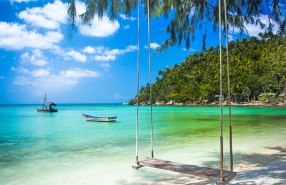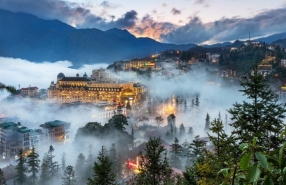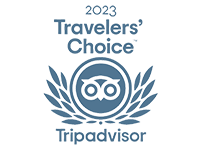Explore The Culture Of Ninh Binh - The Art Of Cheo, A Traditional Vietnamese Performance
Wednesday, January 31, 2024
Places to visit & things to do

The art of Cheo has continuously evolved year by year, mirroring the development of Vietnamese society and culture. It carries the distinct characteristics of Vietnamese culture and reflects the diverse realities of life and humanity in various states and aspects. During your trip, in addition to visiting popular destinations, you can also learn about Cheo, a traditional vietnamese performance in Ninh Binh.
Table of Contents
1. The Origin of Cheo - A Traditional Art of Vietnam

Not like any art forms found in other countries such as Beijing opera (Kinh kịch) in China or Noh (Kịch nô) in Japan, Cheo is distinctly Vietnamese and has evolved alongside the country's wet rice-growing civilization and village culture. It serves as a reflection of Vietnamese societal values, encompassing traditional festivals, agricultural practices, interpersonal behavior, and community dynamics.
Cheo originated in the 10th century in the ancient land of Hoa Lu, located in Ninh Binh Vietnam, attributed to the talent of Mrs. Pham Thi Tran, a renowned dancer and singer of the time. Initially confined to this region, Cheo gradually spread to other northern provinces, with its roots possibly tracing back to "trò nhại," a simple mimetic skit prevalent in Vietnamese life during the same period. Over time, it evolved into single and longer Cheo performances.
A significant milestone in Cheo's development occurred in the 14th century when a Mongolian soldier introduced Chinese Opera to Vietnam, influencing Cheo by incorporating singing elements into its repertoire. Despite a brief period of restriction during the 15th century by King Le Thanh Tong, who banned Cheo performances in the Royal Court, the art form regained popularity among farmers and commoners, thriving with scripts derived from "Chữ Nôm" verse. By the late 19th century, Cheo had reached its peak, with adaptations to contemporary life becoming prevalent in the 20th century while still retaining elements of traditional folklore.
Cheo's influence gradually expanded beyond its origins in Ninh Binh to encompass the Northern midland, mountainous regions, and the North Central Coast. Recognizing its unique artistic value, efforts are underway to compile a dossier seeking UNESCO recognition of Cheo as a world cultural heritage. That makes Cheo more popular with many tourists. Besides visiting some tourist attractions, if you don't know what to do in Ninh Binh Vietnam, try listening to some Cheo plays.
2. The profound meaning behind each stage of Cheo - A mark of Vietnamese culture

In the past, Cheo performances typically took place in communal house yards, pagodas, and the residences of noble families. The stage for Cheo presentations was usually a simple mat placed in the center of the yard, with a small curtain backdrop behind it. Artists would enact Cheo plays on the mat, accompanied by musicians seated on both sides, while the audience observed from the front and sides of the stage.
The themes of this traditional vietnamese performance in Ninh Binh plays often revolve around the daily lives of farmers, herdsmen, craftsmen, and landowners. These performances praise virtues, critique negative habits and vices, advocate against injustice, and portray themes of love, compassion, tolerance, and forgiveness.
Watching Cheo provides not only moments of relaxation and laughter but also opportunities for contemplation on life. Cheo characters are typically archetypal and imbued with literary qualities. Additionally, clowns play a significant role, providing commentary on the action in a humorous or satirical manner and often mocking characters perceived as pompous, ridiculous, or dishonest, such as kings and officials.
Cheo is not just a form of culture of Ninh Binh but has become a part of the spiritual life of the Vietnamese people, expressing their sentiments toward the vicissitudes of life through delicate performances, which often last for 2 hours.
3. Some popular stage of Cheo - The engagement of preservation

Some of the most famous Cheo stories in Vietnam include Kim Nham, Trương Viên, Lưu Bình Dương Lễ, Quan Âm Thị Kính, Chu Mãi Thần, Trinh Nguyên, Từ Thức, Ơn Trả Nghĩa Đền. The common theme among these Cheo stories is the praise of the virtues and the portrayal of simple rural life. Listen to Cheo is one way that you can learn more about the culture of Vietnam.
Because they draw from everyday life and folk literature, Cheo stories have enduring vitality. They quickly became popular within communities due to their relatable content. These melodies and stories are passed down from generation to generation, preserving and protecting their essence and authenticity.
Cheo reflects all aspects of the Vietnamese national character: optimism, compassion, love for peaceful and simple life, but also brimming with national pride, resilience against foreign invaders, and dedication to protecting the homeland. With its unique artistic qualities and inherent aesthetic, ethical, and humanistic values, this traditional vietnamese performance in Ninh Binh is not only a spiritual nourishment during leisurely moments for rural folks but also integrates deeply into life with profound lessons on morality and humanity. When visiting Ninh Binh, you will not only be amazed by the magnificent beauty of nature and the rich history of the Vietnamese people but also by the preservation of ancient culture that still thrives in this place. To ensure a satisfying experience far beyond your expectations, please CONTACT AUTOUR ASIA - TRAVEL AGENCY VIETNAM now.
Related travel guide
Other similar articles
CUSTOMIZABLE BY LOCAL EXPERTS
Personalized trip at the original price!
REFUND GUARANTEE
We believe in our work and promise to give you money back.
GOOD PRICE / QUALITY
95% satisfied more than expected!
24/7 LOCAL SUPPORT
We are always available online to provide assistance at any time.
Most read articles
Autour Asia is highly recommended on
Embracing the mission of "Satisfied more than expected" and providing authentic experiences, we have received numerous recommendations on reputable travel forums:























